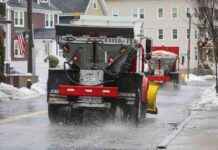It was a cold winter night in northern Ontario, and Rachel Wesley, a member of the Ojibway community, was on a 4×4 truck riding down the 103-mile winter road to Cat Lake First Nation. The road was covered in snow and ice, illuminated only by the stars and the red and white lights of the truck. As they approached a snow bridge over a creek, Wesley noticed that the water was flowing, a sign that the creek no longer freezes as it should due to global warming.
Wesley, who manages the crews that build the winter road, explained how the road is crucial for the community of 650 people to bring in essential supplies like lumber, fuel, food, and bottled water. She mentioned the challenges posed by the changing climate, such as delayed winters, early springs, and less snowfall, making the road construction and maintenance increasingly difficult.
With over 50 First Nations in Canada relying on winter roads, the impact of climate change is evident. The changing conditions are making it harder to transport supplies, with trucks having limited time to operate due to thin lake ice and fragile snow bridges. Despite the urgent need for permanent roads, funding remains a challenge, with government officials denying responsibility and communities lacking the finances to support such projects.
The situation is further complicated by the presence of valuable minerals in regions like the Ring of Fire in northern Ontario. The promise of economic prosperity through mining has led to tensions between First Nations communities and the government. While some see mining as a solution to fund all-season roads, others are concerned about the environmental impact and the potential threats to traditional ways of life. The debate continues as communities like Eabametoong and Cat Lake navigate the delicate balance between economic development and environmental preservation.














